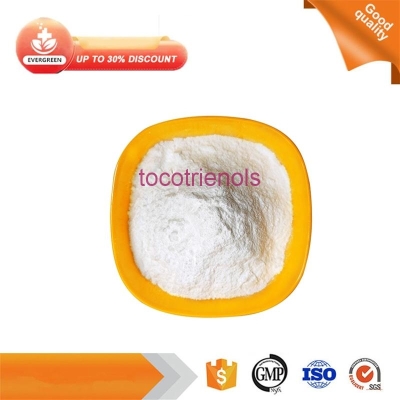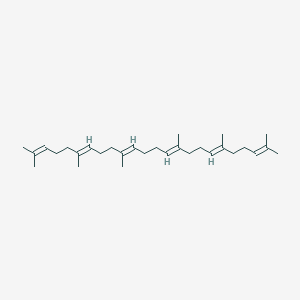-
Categories
-
Pharmaceutical Intermediates
-
Active Pharmaceutical Ingredients
-
Food Additives
- Industrial Coatings
- Agrochemicals
- Dyes and Pigments
- Surfactant
- Flavors and Fragrances
- Chemical Reagents
- Catalyst and Auxiliary
- Natural Products
- Inorganic Chemistry
-
Organic Chemistry
-
Biochemical Engineering
- Analytical Chemistry
- Cosmetic Ingredient
-
Pharmaceutical Intermediates
Promotion
ECHEMI Mall
Wholesale
Weekly Price
Exhibition
News
-
Trade Service
Read: The range of PD treatmentdrugs undergoing clinical trials is wide and promising.
, the Daily Health News recently reported on the case of "Parkinson's patients who have improved after receiving their first stem cell treatment."
scientists used the patient's own skin cells to grow induced pluripotent stem cells (iPSC) in vitro culture, which were then induced to differentiate into mid-brain dopamine precursor cells, which were then implanted into the Parkinson's patient.
positive electron emission tomography scans showed that the graft survived steadily in the patient's body.
18-24 months after transplant treatment, the patient's Parkinson's clinical symptoms stabilized or improved.
Parkinson's disease (PD) is a neurodegenerative disease and there is no cure.
in recent years, with the development of life science technology, both the understanding of disease and the way of diagnosis and treatment have made great progress.
May one day Parkinson's disease will no longer be incurable.
Global Profile of PD Treatment Drugs Recently, a review in the Journal of Parkinson's Disease collates the treatment drugs for Parkinson's disease, which are currently being clinically tested.
the researchers screened 145 PD therapeutic drugs currently undergoing clinical trials for decomposition analysis, of which 51 (35%) were in the first phase, 66 (46%) in the second phase and 28 (19%) in the third phase.
57 trials (39 per cent) focused on long-term disease improvement therapy (DMT), while the remaining 88 trials (61 per cent) looked at short-term, daily symptom-relieving therapies (ST).
photo source: doi.org/10.3233/JPD-202128. Alpha-synaptic nucleoprotein target drugs have important genetic, histological, and pathological evidence that mutations, aggregation, and excessive accumulation of alpha-synaptic nucleins are closely related to PD.
several clinical trials of alpha-synaptic nuclein-targeted drugs, including five small molecule-targeted drug trials: anle138b, ENT-01 (2 trials), glycol and meracetamol;
in Stage II clinical phase there are two antibody drugs that target alpha-synaptic nuclein: Biogen (BIIB054) and Roche (RO7046015/prasinezumab).
is highly likely to alter the PD process by blocking the transfer of alpha-synaptic nucleoprotein cells, an area that is being closely watched by scientists and patients.
but in recent immunotherapy for Alzheimer's disease, the effectiveness of this method has been limited, and the focus on this target has eased.
recent studies of PD mechanisms in drugs that improve mitochondria/lysosome defects have found that mitochondria and lysosomes are more prone to failure.
four studies focused on mitochondrial defects, two of which involved bear deoxygenation (UDCA) and two of BioElectron's EPI-589 (BioE-589) and Clene Nanomedicine's CNM_Au8.
four studies focused on the activity of the GBA gene product glucose encephalosomes, which are closely related to lysozyme function, including two new trials of the old drug ampichimino, Sanofi's venglustat, and Prevail Therapeutics gene therapy.
GLP-1 receptor agonist in pD models, GLP-1 receptor agonists have been shown to have a neuroprotective effect.
currently has eight clinical trials related to GLP-1 receptor agonists: exenatide (n s 5), liraglutide, lixisenatide and semaglutide.
kinase inhibitors in the four kinase inhibitors analyzed, three are targeted at c-Abl protein kinases.
Although the results of the recent Nilotinib Phase II clinical trial have not achieved the desired results, this enzyme is still a worthy target for study, and the reason for the failure may be related to the drug's failure to pass through the blood-brain barrier, rather than target error or MOA incorrectness.
in clinical trials of PD, FB-101, K0706 and saracatinib were all targeted at c-Abl.
another kinase inhibitor is LRRK2 inhibitor (DNL151), which may also become an active area of research in the future.
intestinal microbiome regulators In recent years, the influence of intestinal flora in PD has become a hot topic in preclinical research, and there have been many clinical trials for gastrointestinal disorders.
data show that five studies treatped PD by affecting the content and activity of the gut flora, all of which were conducted in academic institutions.
include two rifseciability intervention trials, a probiotic (drug-resistant maltodextrin) trial, a fecal extract (PRIM-DJ2727) trial, and fecal microbial transplantation.
Gene Therapy/Cell Therapy Gene Therapy by providing biosynthetic enzyme genes that enable striatum dopamine synthesis, such as VY-AADC01 and OXB - 102 (AXO-Lenti-PD).
cell therapy, also through dopamine replacement therapy, is still in the early stages of clinical studies, with eight studies in the first stage and one in the second phase.
discussion the FDA recently approved four drugs to treat the PD "off" period as an alternative treatment for the left-handed dopa/kabidoba: Kynmobi (apomorphine hydro), Opicapone (Ogentys), Nourianz/Istradeyllin and Inbrija, offering patients more options.
the momentum of Parkinson's disease research continues, and there are a wide range of treatments under way, and perhaps the road ahead, but there will always be new mechanisms of action/new target drugs coming to market in the future, offering hope to patients suffering from disease and injury.
Source: Kevin, M., et Al. (2020) Parkinson's Disease Drug Therapies in the Clinical Trial Pipeline: 2020. Journal of Parkinson's Disease.Parkinson's Patient Improving First-Ever Stem Cell Therapy. Guidelines for Therapy for Parkinson's Disease (2019)







